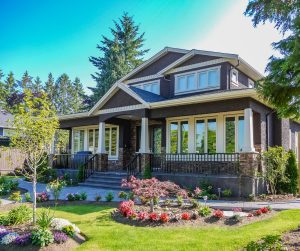
The housing market is currently facing a significant crisis, marked by staggering foreclosure statistics that are raising alarms across the nation. As economic uncertainties loom, many homeowners find themselves unable to meet their mortgage obligations, leading to a surge in foreclosures. This article delves into the current landscape of foreclosure rates, examines historical contexts, identifies key contributing factors, assesses the impact on communities, explores government responses, and offers predictions for the future of housing stability.
Understanding the Current Landscape of Foreclosure Rates in the Housing Market
In recent months, foreclosure rates have surged, with reports indicating an increase of over 30% compared to the previous year. The Mortgage Bankers Association (MBA) has highlighted that the national foreclosure rate now stands at its highest level since the onset of the COVID-19 pandemic. This spike is attributed to a combination of factors, including rising interest rates, inflationary pressures, and the expiration of pandemic-era protections. Many homeowners, particularly those who purchased properties during the market’s peak, are now grappling with the financial strain of higher mortgage payments and increased living costs, pushing them toward the brink of foreclosure.
Historical Context: How Past Crises Shape Today’s Foreclosure Statistics
To understand the current foreclosure landscape, it is essential to consider historical precedents. The 2008 financial crisis serves as a stark reminder of the devastating impact of widespread foreclosures on the housing market and the economy at large. During that period, millions of Americans lost their homes, leading to a prolonged recession and a significant decline in property values. Lessons learned from that crisis have informed current policies and consumer behavior, yet the similarities in rising foreclosure rates raise concerns about the potential for a repeat scenario. The cyclical nature of the housing market, combined with the lingering effects of past economic downturns, underscores the importance of vigilance in monitoring foreclosure trends.
Key Factors Contributing to the Rise in Foreclosures Amid Economic Uncertainty
Several key factors are driving the recent increase in foreclosures. Primarily, the Federal Reserve’s aggressive interest rate hikes aimed at curbing inflation have resulted in higher mortgage rates, making homeownership less affordable for many. Additionally, the economic fallout from the pandemic has left numerous individuals and families struggling with job loss or reduced income, further complicating their ability to keep up with mortgage payments. Moreover, the end of various government assistance programs, including foreclosure moratoriums and forbearance options, has left many homeowners without the necessary support to navigate their financial challenges. These elements create a perfect storm, leading to a rise in foreclosure filings across the country.
The Impact of Foreclosures on Local Communities and Housing Markets
The ramifications of increased foreclosures extend beyond individual homeowners, significantly impacting local communities and housing markets. Foreclosures can lead to a decline in property values, as distressed homes often sell for less than their market value, dragging down the prices of surrounding properties. This devaluation can create a ripple effect, leading to decreased tax revenues for municipalities and reduced funding for essential services. Furthermore, neighborhoods with high foreclosure rates may experience increased crime and social instability, as vacant homes become targets for vandalism and neglect. The psychological toll on communities, where residents witness their neighbors losing homes, can also contribute to a sense of despair and decreased community cohesion.
Government Responses: Policies and Programs Addressing the Foreclosure Crisis
In response to the rising foreclosure crisis, various government entities have initiated policies and programs aimed at providing relief to struggling homeowners. The U.S. Department of Housing and Urban Development (HUD) has expanded access to counseling services, helping homeowners understand their options and navigate the complexities of foreclosure prevention. Additionally, state and local governments have implemented programs offering financial assistance for mortgage payments and legal aid for those facing foreclosure. However, critics argue that these measures may not be sufficient to address the scale of the crisis, calling for more comprehensive solutions, including targeted interventions for at-risk populations and increased funding for affordable housing initiatives.
Future Outlook: Predictions and Trends in Foreclosure Rates and Housing Stability
Looking ahead, experts predict that foreclosure rates may continue to rise in the short term, particularly as the economic landscape remains uncertain. With inflation persisting and interest rates likely to remain elevated, many homeowners may find it increasingly difficult to manage their mortgage obligations. However, some analysts suggest that the housing market may stabilize in the long run as supply and demand dynamics shift and more affordable housing options become available. The effectiveness of government interventions and the overall economic recovery will play crucial roles in shaping the future of foreclosure rates and housing stability. As the situation evolves, ongoing monitoring and proactive measures will be essential to mitigate the impact of foreclosures on individuals and communities alike.
===
The current state of the housing market, characterized by rising foreclosure rates, presents a multifaceted challenge that requires urgent attention from policymakers, financial institutions, and communities. Understanding the historical context, identifying contributing factors, and assessing the impact on local economies are vital steps in addressing this crisis. As government responses evolve and the economic landscape shifts, the future of housing stability remains uncertain. However, with concerted efforts and strategic interventions, there is hope for a more resilient housing market that can withstand the pressures of economic fluctuations and safeguard the well-being of homeowners and communities across the nation.



























